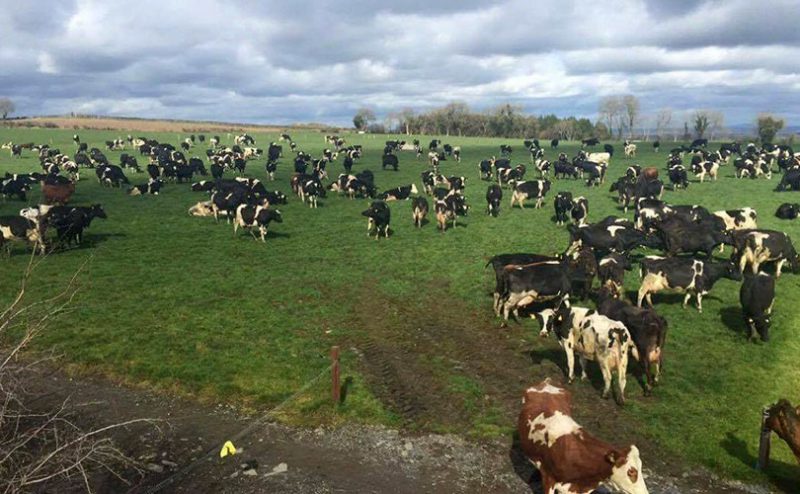
Dunleer farmer Michael Callan is one such farmer that despite extending his dairy herd over the last number of years, has seen the price in milk fall considerably.
“Getting rid of the milk quota didn’t really have a huge effect on the price of milk. The world market did and that is what will always dominate what the price of milk is,” said Michael.
Milking 450 cows twice daily is a routine that Michael and his family have become accustomed too in recent years.
“In 2009, I was milking 90 cows but in the following three years we added to the herd every year by buying in cows, but we have not bought in since and are relying on the heifers we have to extend the herd ever since.”
Michael has managed to include high quality fresh grass to feed his herd and he admits that there is more of an emphasis placed on what cattle eat these days.
“Farming has certainly got more scientific in recent times and you have to monitor the feed and grass that you give the cattle in order for them to produce the highest yield possible.”
Michael is helped out on the farm by his wife Christine who looks after the books, ably assisted by their daughter Emma, while his three sons Sean, Conor and Barry are all deeply involved in farming and are set to remain in agricultural work following their studies.
“The three lads are all determined to forge careers in farming against my better wishes,” jokes Michael. “They are hugely interested in it and if that’s what they want to do, we won’t be standing in their way.”
Dairy farming has been part of agriculture for thousands of years. Historically it has been one part of small, diverse farms. In the last century or so larger farms doing only dairy production have emerged. Large scale dairy farming is only viable where either a large amount of milk is required for production of more durable dairy products such as cheese, butter, etc. or there is a substantial market of people with cash to buy milk, but no cows of their own.
“We milk the herd in two different lots, using Dairymaster milking machines in both parlours. We have a 22-unit parlour that milks 150 cows in about an hour and half, while the 30-unit parlour milks 300 cows in just over three hours.”
Michael has two full time workers on the farm and they carry out the majority of the annual workload themselves on the 600 acres that they are farming in Paughanstown.
“The majority of the work would be done by ourselves. We would do about 100 acres of tillage every year and we would have a contractor come in and do the combining, while we had a contractor in this year doing the umbilical system for the slurry as the land was so wet.”
Michael admits that the wet weather has put the season back a few weeks. “Usually, we would be doing silage by the first week in May, but you will be looking at least a three-week delay in that this year. We had to bring the cattle back in to the sheds in April. However, we’re fortunate that we have good land here and it dries out very quickly.”
To carry out their daily duties and seasonal work, Michael has an extensive range of machinery at his disposal and only last year added a Case Puma CVX 1190 to the fleet along with a new teleporter.
“I try to add to the machinery as often as possible and keep it in good working order, we would do most of the maintenance work ourselves. Farming is never easy, but I’m about the fourth generation of the family that is doing it and it looks as if the lads will follow in my footsteps, so I hope to have the farm built up some more before handing over the reins to them.”
Michael Callan
Paughanstown,
Dunleer,
Co Louth
Taken from Irish Tractor & Agri magazine Vol 4 No 6, July/August 2016